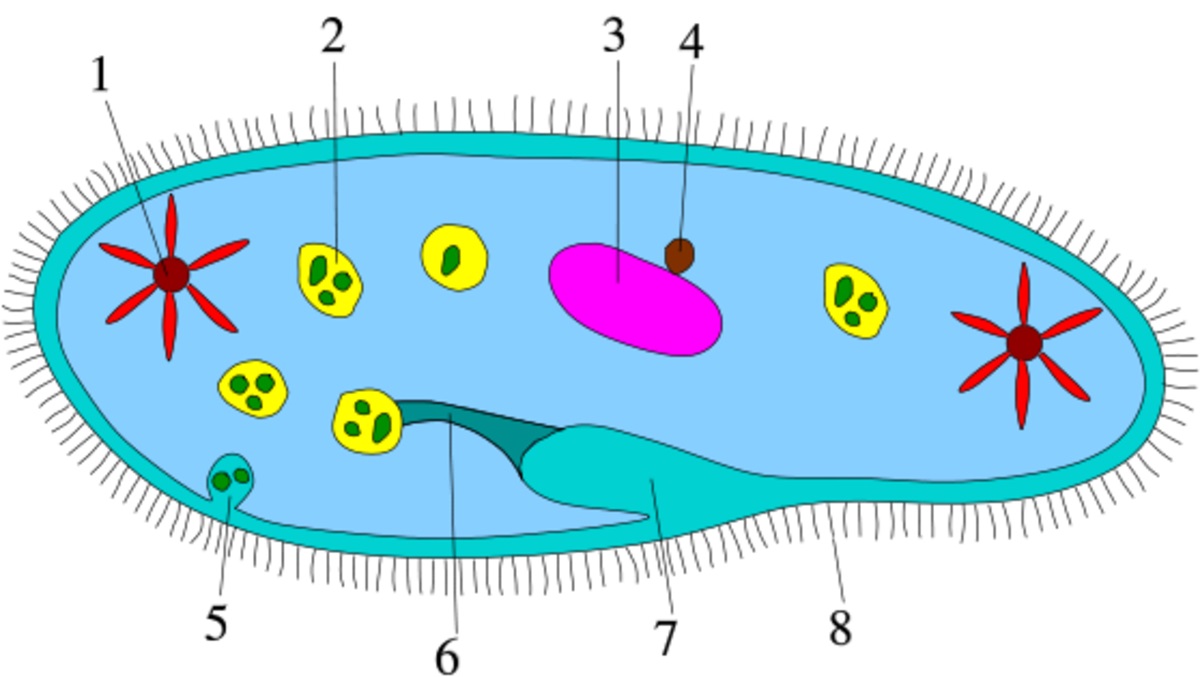
Sure, here's the introduction wrapped with
tags:
Paramecium are fascinating single-celled organisms that belong to the group of ciliates. These tiny creatures are abundant in freshwater environments and are widely studied in biology due to their unique characteristics and behavior. In this article, we’ll explore 18 fun and intriguing facts about Paramecium, shedding light on their remarkable abilities and importance in the ecosystem. From their complex structure to their role in scientific research, Paramecium offer a wealth of interesting insights into the world of microbiology. So, let’s dive into the captivating world of Paramecium and uncover the secrets of these remarkable microorganisms.
Key Takeaways:
- Paramecium, a tiny single-celled organism, has a unique slipper-like shape and plays a vital role in recycling nutrients in freshwater environments. It’s like a tiny superhero keeping the water clean and healthy!
- Paramecium can sense changes in its environment, reproduce quickly, and help scientists learn about genetics. It’s like a tiny detective, always adapting and revealing secrets about the natural world.
18 Paramecium Fun Facts
Paramecium is a fascinating single-celled organism that belongs to the group of ciliates. These tiny creatures are abundant in freshwater environments and are known for their unique characteristics. Let’s dive into 18 intriguing facts about Paramecium!
Paramecium has an elongated slipper-like shape.
These microscopic organisms exhibit a distinctive slipper or cigar-like shape, typically ranging from 50 to 300 micrometers in length. This shape allows them to move swiftly through water using hair-like structures called cilia that cover their entire body.
They possess a complex cellular structure.
Despite being single-celled, Paramecium has a complex internal structure. They contain a distinct nucleus, known as a macronucleus, which controls everyday functions, and a micronucleus, responsible for genetic exchange during reproduction.
Paramecium feeds on bacteria and small algae.
These microorganisms are voracious feeders, using their oral groove and gullet to engulf bacteria and small algae for nourishment. Their feeding process plays a crucial role in the aquatic food chain.
They reproduce asexually through a process called binary fission.
Paramecium reproduces by splitting into two identical daughter cells through binary fission. This rapid form of reproduction enables them to thrive in diverse aquatic habitats.
Paramecium possesses a primitive form of sensory perception.
Despite their microscopic size, these organisms exhibit rudimentary responses to stimuli. They can detect changes in their environment and react accordingly, showcasing a basic form of sensory perception.
They have a contractile vacuole for osmoregulation.
Paramecium maintains water balance within its cell through a specialized organelle called the contractile vacuole. This structure actively pumps out excess water to prevent cellular swelling and maintain homeostasis.
Paramecium exhibits remarkable regenerative abilities.
These resilient organisms have the capacity to regenerate and repair damaged or injured parts of their cell, allowing them to recover from various environmental stresses and physical injuries.
They are sensitive to changes in light intensity.
Paramecium showcases sensitivity to alterations in light intensity, often exhibiting distinct behavioral responses when exposed to varying levels of light within their habitat.
Paramecium can be found in diverse aquatic habitats.
From stagnant ponds to freshwater streams, Paramecium thrives in a wide range of aquatic environments, contributing to the ecological balance and serving as a fundamental component of the microbial community.
They play a vital role in nutrient recycling.
As primary consumers in the microbial food web, Paramecium actively participate in the decomposition of organic matter, releasing essential nutrients back into the ecosystem and supporting the overall health of aquatic environments.
Paramecium exhibits distinct swimming patterns.
These microorganisms showcase intricate swimming behaviors, utilizing their cilia to propel themselves in a characteristic spiraling or spinning motion, enabling efficient movement through their aquatic habitat.
They are part of the phylum Ciliophora.
Paramecium belongs to the phylum Ciliophora, characterized by the presence of cilia for locomotion and feeding. This diverse group of organisms encompasses a wide array of ciliated protozoans with unique ecological roles.
Paramecium can undergo cellular exchange during conjugation.
During conjugation, Paramecium engages in a unique form of genetic exchange, where two organisms temporarily fuse and exchange genetic material, contributing to genetic diversity within the population.
They exhibit a specialized feeding structure known as the oral groove.
Paramecium possesses a distinct oral groove, a furrow-like structure along its body that functions in food ingestion and transport, facilitating the efficient capture and consumption of microbial prey.
Paramecium has been a subject of extensive scientific research.
Due to its unique biological features and ease of cultivation, Paramecium has served as a model organism for numerous scientific studies, contributing valuable insights into cellular processes and genetic mechanisms.
They are sensitive to environmental changes.
Paramecium demonstrates sensitivity to alterations in temperature, pH levels, and chemical composition within their habitat, highlighting their role as bioindicators for assessing environmental quality.
Paramecium possesses remarkable adaptability.
These resilient microorganisms exhibit remarkable adaptability to changing environmental conditions, showcasing their capacity to thrive in diverse aquatic ecosystems and withstand fluctuating environmental challenges.
These 18 Paramecium Fun Facts shed light on the remarkable characteristics and ecological significance of these fascinating microorganisms, highlighting their pivotal role in freshwater ecosystems and their contributions to scientific research.
Conclusion
Paramecium is a fascinating organism with a myriad of intriguing characteristics. From its unique shape and structure to its diverse habitats and essential role in the ecosystem, Paramecium offers a wealth of learning opportunities. As we delve deeper into the world of biology, understanding the intricate details of Paramecium’s behavior, reproduction, and evolutionary significance becomes increasingly crucial. By exploring the fun facts about Paramecium, we gain a deeper appreciation for the complexity and diversity of life on Earth. Whether studying Paramecium for educational purposes or sheer curiosity, the knowledge gained from these fun facts enhances our understanding of the natural world and the remarkable adaptations that enable organisms like Paramecium to thrive.
FAQs
What is the significance of Paramecium in the ecosystem?
Paramecium plays a vital role in the ecosystem as a primary consumer, feeding on bacteria and other microorganisms. This helps regulate microbial populations and nutrient cycling in various aquatic environments.
How does Paramecium reproduce?
Paramecium reproduces asexually through a process called binary fission, where the organism divides into two identical daughter cells. This rapid reproduction contributes to its abundance in diverse habitats.
Can Paramecium be found in terrestrial environments?
While Paramecium is primarily found in freshwater habitats, certain species have adapted to survive in moist terrestrial environments, such as decaying organic matter and soil rich in organic material.
Was this page helpful?
Our commitment to delivering trustworthy and engaging content is at the heart of what we do. Each fact on our site is contributed by real users like you, bringing a wealth of diverse insights and information. To ensure the highest standards of accuracy and reliability, our dedicated editors meticulously review each submission. This process guarantees that the facts we share are not only fascinating but also credible. Trust in our commitment to quality and authenticity as you explore and learn with us.


